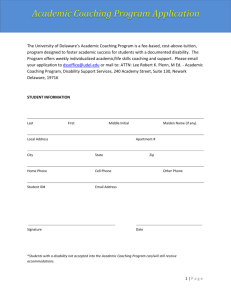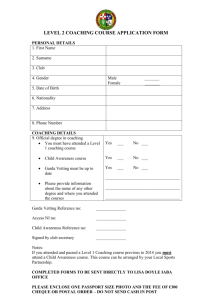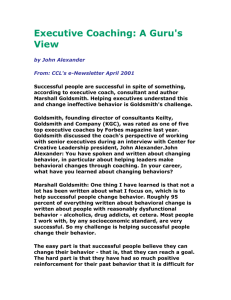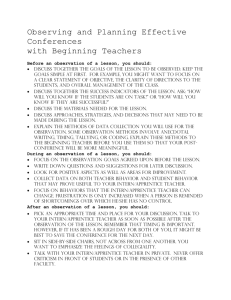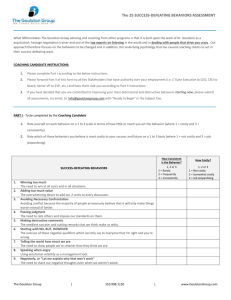Feedback and Coaching Guide
advertisement
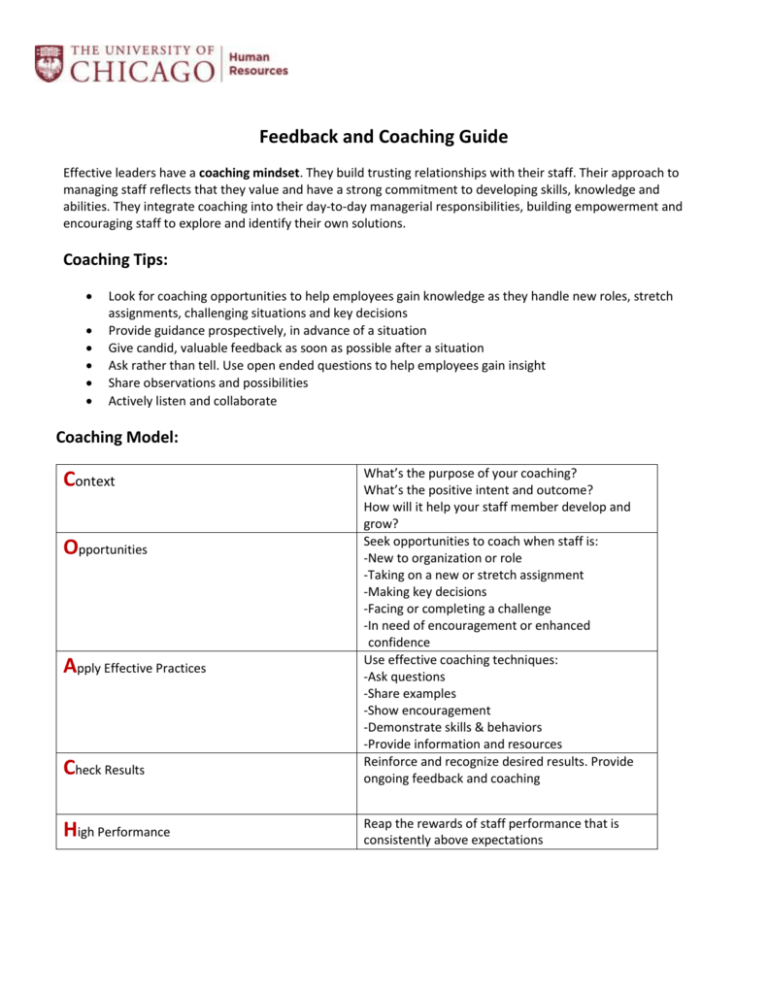
Feedback and Coaching Guide Effective leaders have a coaching mindset. They build trusting relationships with their staff. Their approach to managing staff reflects that they value and have a strong commitment to developing skills, knowledge and abilities. They integrate coaching into their day-to-day managerial responsibilities, building empowerment and encouraging staff to explore and identify their own solutions. Coaching Tips: Look for coaching opportunities to help employees gain knowledge as they handle new roles, stretch assignments, challenging situations and key decisions Provide guidance prospectively, in advance of a situation Give candid, valuable feedback as soon as possible after a situation Ask rather than tell. Use open ended questions to help employees gain insight Share observations and possibilities Actively listen and collaborate Coaching Model: Check Results What’s the purpose of your coaching? What’s the positive intent and outcome? How will it help your staff member develop and grow? Seek opportunities to coach when staff is: -New to organization or role -Taking on a new or stretch assignment -Making key decisions -Facing or completing a challenge -In need of encouragement or enhanced confidence Use effective coaching techniques: -Ask questions -Share examples -Show encouragement -Demonstrate skills & behaviors -Provide information and resources Reinforce and recognize desired results. Provide ongoing feedback and coaching High Performance Reap the rewards of staff performance that is consistently above expectations Context Opportunities Apply Effective Practices Giving Effective Feedback Tips: • Give positive feedback to reinforce behaviors • Give feedback privately when you wish to adjust behaviors and improve performance • Focus on facts and behaviors rather than opinions and personal characteristics • Make feedback discussions interactive and collaborative • Be direct, respectful and listen • Provide support while maintaining employee’s accountability • Use “I” statements (I observed, I felt); Avoid “You” statements • Make feedback balanced and timely. Acknowledge when behavior has had a positive impact • Give feedback as often as necessary to improve employee performance Feedback Model: Open-ended Questions asked by Manager Feedback for Positive Reinforcement Feedback for Improvement/Development What happened? Ask employee to describe what happened. Guide discussion to specific action/behavior. Provide the facts. Ask employee to describe what happened. Guide discussion to specific action, behavior. Provide the facts. What was the impact? Discuss how goals, objectives, team, and/or you were affected. Discuss how goals, objectives, team, and/or you were affected. What alternative action could be taken to achieve better results? Explore alternative action ideas; suggest alternative actions if needed What results would be achieved? Discuss how alternative action brings more effective results




